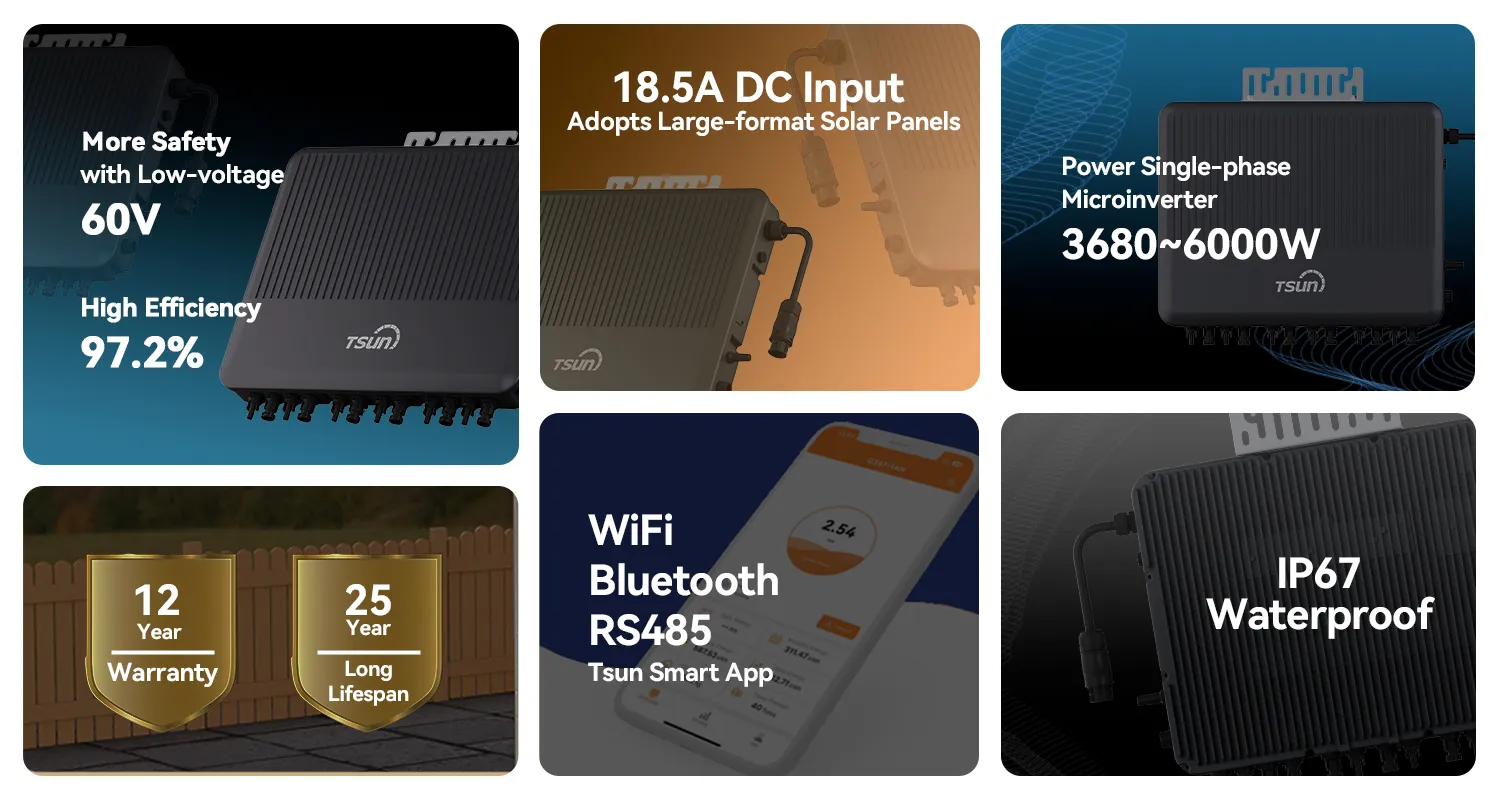Solar cell microinverters are transforming the solar power landscape with their advanced technology, providing efficiency and productivity enhancements for both residential and commercial solar energy systems. Unlike traditional string inverters, which connect all panels to a single inverter, microinverters are designed to be affixed to each individual solar panel. This configuration offers multiple crucial advantages, advancing the solar technology field with a focus on performance, durability, and scalability.

Microinverters play a pivotal role in optimizing the performance of solar energy systems, maximally converting solar energy into usable electrical power. Their design allows each panel to operate independently, which significantly improves the energy harvest from the entire array. This independence means that shading, debris, or performance issues with one panel do not impede the performance of the others in the system. If one panel is underperforming, the rest continue to function optimally, leading to higher overall energy yields compared to traditional inverters where the weakest panel can diminish the performance of the entire setup.
Durability and reliability are crucial benefits of solar cell microinverters. Engineered for harsh environmental conditions, they have a long lifespan thanks to rigorous testing that ensures they can withstand factors like temperature extremes, humidity, and wind. By reducing the vulnerability points common in traditional inverter systems, they offer sustained energy performance and reliability. Furthermore, their distributed architecture reduces the risk of system-wide failures, ensuring consistent power delivery even if one microinverter experiences a malfunction.

The installation flexibility provided by microinverters is another valuable attribute. They are ideal for installations on complicated roof structures or at varying angles, accommodating surfaces that may not be perfectly perpendicular to the sun’s path. This adaptability aids in maximizing the available roof space, allowing homeowners and businesses to ensure the most efficient layout possible and often increasing total power capacity.
Safety is a key concern addressed by microinverters through their lower voltage handling, which reduces the risk of electrical hazards. Unlike high voltage DC lines used in string inverters, microinverters convert DC to AC power directly at the panel and carry energy at the safer AC voltage throughout the system. This not only enhances safety for maintenance personnel and firefighters but also simplifies installation and system inspection, reinforcing trust in solar energy systems.
solar cell microinverter
Moreover, microinverters enhance monitoring and maintenance processes. Advanced monitoring software allows users and technicians to gain real-time insights into the performance of individual panels, identifying issues more quickly and accurately than with traditional systems. This real-time data collection aids in proactive maintenance strategies, reducing downtime and facilitating targeted service efforts. Consequently, system owners can ensure that their solar investment continues to perform efficiently and effectively over time.
In terms of expertise, solar microinverters have consistently demonstrated a high return on investment. The modular nature of these systems allows for ease of upgrading and expansion, providing homeowners and businesses the flexibility to scale their systems as energy needs change. Industry experts and studies have highlighted the longevity and enhanced energy capture in systems utilizing microinverters, solidifying their role as a reliable component in modern solar energy solutions.
Trust in microinverter-based systems has been built through decades of innovation and proven performance in diverse environments globally. Backed by comprehensive warranties and a track record of enhancing solar panel productivity and system robustness, consumers have confidence in both the immediate and long-term benefits of adopting microinverter technology.
Thus, the case for embracing solar cell microinverters is compelling, with their contributions to maximizing energy output, providing reliable and resilient systems, and ensuring safety making them a wise choice for those transitioning to renewable energy solutions. As the renewable energy industry continues to grow and evolve, microinverters stand out as a critical development driving efficiency, reliability, and scalability in solar power applications.
 LEARN DETAILS
LEARN DETAILS



